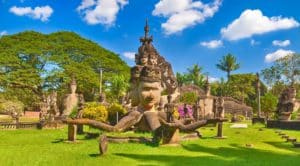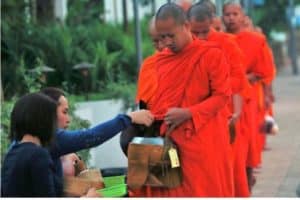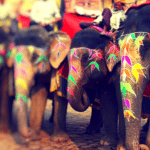Southeast Asia’s Last Frontiers – Laos
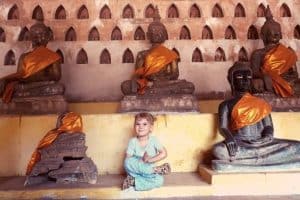 Laos is often overlooked by travelers visiting its heavily traveled neighbors Thailand and Vietnam. This is unfortunate as Laos would surprise them with its many wonderful attractions, from wildlife-filled forests, numerous breathtaking waterfalls in the north, mysterious ancient past to its interesting colonial heritage.
Laos is often overlooked by travelers visiting its heavily traveled neighbors Thailand and Vietnam. This is unfortunate as Laos would surprise them with its many wonderful attractions, from wildlife-filled forests, numerous breathtaking waterfalls in the north, mysterious ancient past to its interesting colonial heritage.
Here are 7 travel tips for visiting one of Southeast Asia’s last untouched frontiers.
1. Unspoilt Natural Beauty
Laos is well known for its wild and largely untouched landscape. The majestic Mekong River snakes through Laos, along the border with Thailand. The river flows through jungles, creating deep gorges and carving out many breathtaking waterfalls.
The most famous waterfall is Kuang Si waterfall featuring countless cascading pools of turquoise water trickling down from the main fall that measures a staggering 200 feet tall. Some waterfalls also double as swimming pools, but be sure to respect the local culture and dress appropriately when you are cooling off in the water.
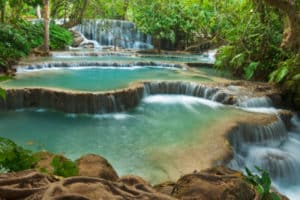
2. Buddha, Buddha
You’ll find many Buddha statues everywhere you turn in this Buddhist country. Check out the golden sleeping buddha in the glittering Pha That Luang stupa in Vientiane. The quirky Buddha Park has more than 200 fantastic concrete sculptures of all sizes that draw inspiration from Buddhism and Hinduism. Thousands of tiny Buddha statues in various meditation, teaching and reclining poses, reside in the two cave temples at Pak Ou Caves.
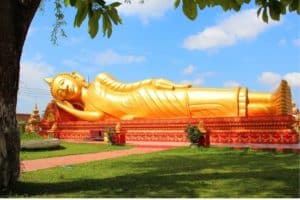
3. Mystic Plain of Jars
Thousands of mysterious giant stone jars are scattered across miles of rolling hills near Xiengkhouang province. Each jar weighs several tons. Archaeologists estimate they date from the Southeast Asian iron age (500 BC to AD 200) and were likely used for elaborate burial rituals. It is one of Southeast Asia’s most mysterious and misunderstood prehistoric places, comparable to Easter Island or Stonehenge. Some areas are off-limits, due to unexploded bombs left over from the Indochina wars.
4. Enchanting City – Luang Prabang
You can’t doubt the folks at UNESCO who selected the city of Luang Prabang as a World Heritage Site. It is shaped by lofty green mountains at the meeting place of the Mekong and Khan rivers. Luang Prabang exudes causal grandeur. The city is filled with ancient red-roofed temples, French-Indochinese architecture, palm trees and sacred Buddha statues. Saffron-robed monks glides through the morning mist to collect Alms offerings. Check out the traditional handicrafts in the colorful night market. Taste fragrant Lao cuisine and you might even want a lesson at one of the excellent cooking schools. Luang Prabang is a romantic and enchanting city.
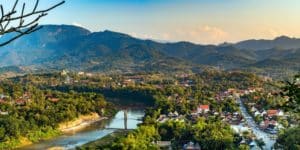
5. Tribal Handicrafts
There are many native tribes like Hmong, Mien and more. Each tribe has their unique specialty in handicraft and artistic designs that contain ritual meanings. Silk and cotton fabrics, colorful embroidery and quilts, silver and gold jewelry, paper craft from the mulberry tree, mats and baskets are just a fraction of the handicraft they make. While visiting the villages, you can buy souvenirs directly from the artists at a better price. Don’t forget to bargain at the daytime Phosi Market and the huge night market in Luang Prabang.
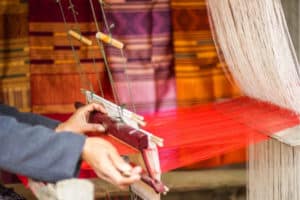
6. The Food is Awesome
Laotian food is fiery and fragrant with a hint of sourness that happily marries ingredients and techniques from neighboring Thailand and Vietnam, and yet retains its own identity using fermented fish sauce, lemongrass, coriander leaves, chilis and lime juice. Sticky rice is a staple that it is eaten with the hands by pressing the rice into a ball and dipping into one of the dishes. This landlocked country has abundance of freshwater fish and the cuisine features a variety of meat including pork, chicken, duck and water buffalo. With the advent of French colonization, Laos started growing high quality coffee beans and also invented its own baguette sandwiches. Another French legacy is beerlao, widely regarded as one of the best beers in the region. This light and distinctive tasting beer is made with locally grown jasmine rice and imported malt and hops.
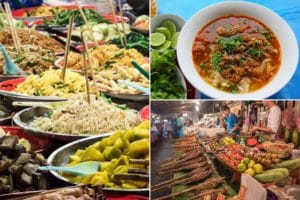
7. Colonial Era Boutique Hotels
Budget conscious travelers can find economical guest houses and mid-range hotels with air conditioning. Restored French colonial villas offer a luxurious getaway for relaxation after a day of sightseeing and adventure. To kick this up a notch, be sure to try a traditional Lao massage and a steam bath infused with herbal mixtures to rejuvenate yourself.
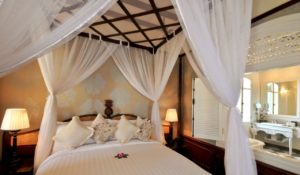
(Courtesy of Luang Say Residence in Luang Prabang)
Laos has made a huge commitment to responsible tourism. Visitors to Laos can travel responsibly to experience its natural beauty, rich heritage and amazing food, with opportunities to buy handicrafts directly from the tribal artisans.
Recommended Journeys To Laos
We make it easy to find your dream vacation! Save time by choosing one of our great Laos Tours, and embark on a magical journey with your own private tour guide and driver.
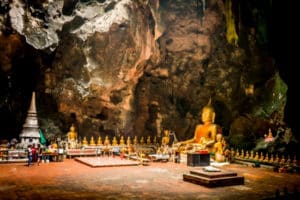
Discover Laos
6 Days from $1,900 per person
From an entire town a heritage site to the most spectacular waterfalls, step-back-in-time to explore its true wonders.
view details >



